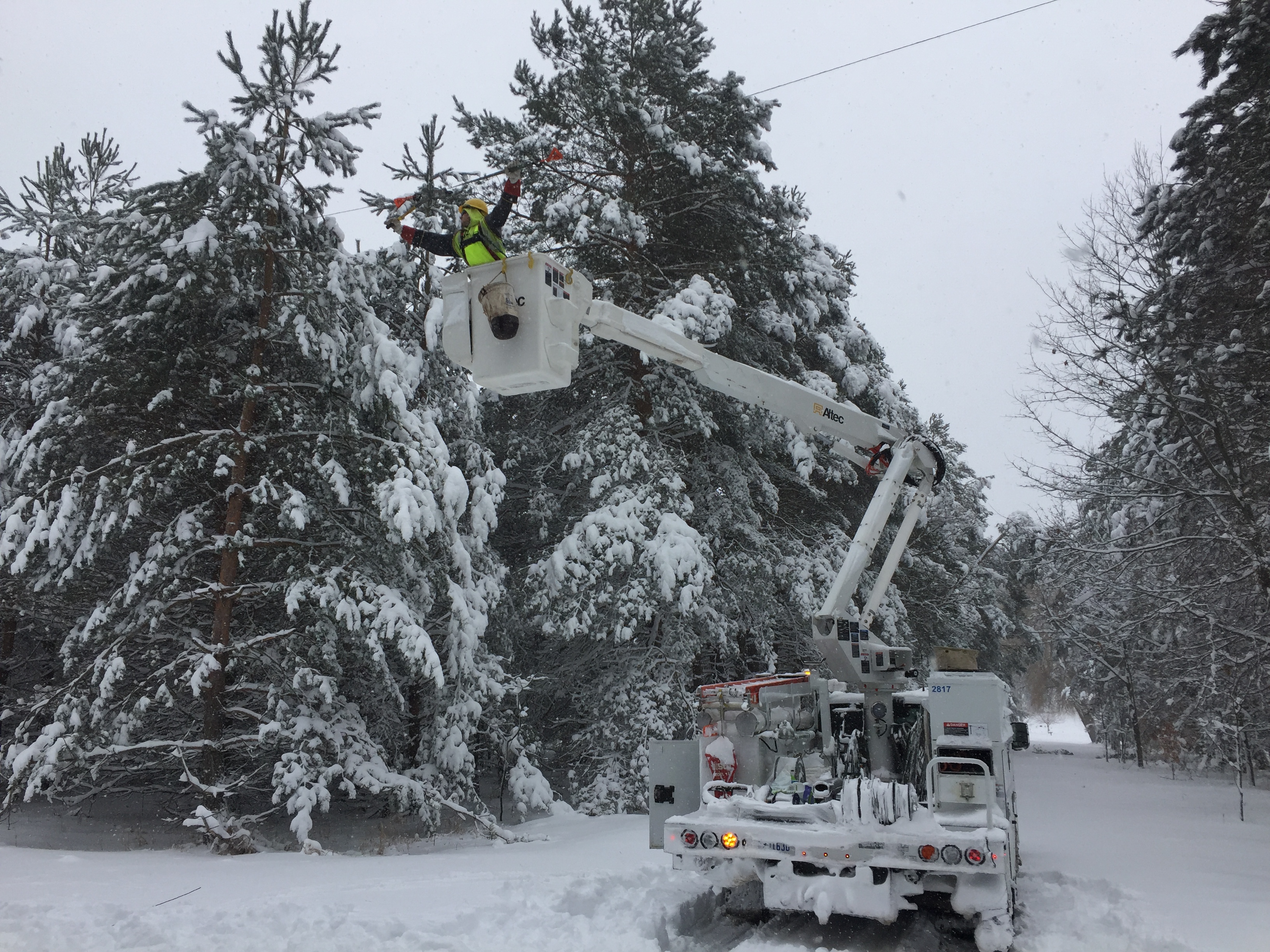
The calendar says spring, but electric cooperatives in several states have been busy tackling power outages caused by blizzards, wildfires, nearly three feet of rain in some areas, and hurricane force winds.
In western Oklahoma, where many co-op-served communities have had no measurable rainfall in more than six months, tinder-dry vegetation has burned thousands of acres.
“Northwestern Electric Cooperative has lost more than 800 distribution poles, and damages are in excess of $2 million,” said Sid Sperry, director of public relations, communications and research for the Oklahoma Association of Electric Cooperatives.
Sperry added that crews from the Woodward-based co-op have responded to fire-related outages since April 11. With humidity in the single digits and seasonal winds of 25 to 40 mph, fire risks remain high.
“Western Farmers Electric, a G&T co-op based in Anadarko, has lost more than 100 transmission assets in counties served by Northwestern,” said Sperry, adding that four other Oklahoma co-ops have also suffered wildfire damage.
In the upper Midwest, bitter cold temperatures and arctic winds pushing south from Canada have brought late-season blizzards to parts of the Dakotas, Minnesota and Nebraska.
“We had 70 transmission poles down,” said Carrie Law, director of communications and government relations for Sioux Valley Energy in Colman, South Dakota. “Winds in our area hit 80 mph.”
About 1,500 of the co-op’s 22,000 meters were without power following an April 13 blizzard. Restoration work concluded April 16, but permanent repairs continue.
Co-op and public power district crews working restoration in the region have had to periodically stand down as high winds pick up and new storms develop.
“At times you couldn’t see more than about 20 feet,” said Earl Reilly, operations superintendent for Sidney, Nebraska-based Wheat Belt Public Power District.
“The majority of our system was out at one time,” said Pam Weiser, Wheat Belt PPD’s business manager. She added that the PPD’s response was an “all hands on deck” event. CEO Tim Lindahl pitched in much of the weekend to help keep members informed on restoration progress through social media updates.
“We may continue to have short outages in the coming weeks to continue the repairs,” Lindahl wrote in an April 15 Facebook posting. He said that portions of the system remained fragile and more outages could occur, with crews busy for weeks making permanent repairs.
Frigid winds, picking up moisture from the Great Lakes, spread a wintry mix of snow, ice and heavy sleet to co-op territories in Wisconsin, Michigan and Ohio.
“We got heavy snow throughout the weekend,” said Shari Culver, vice president of communications, marketing and energy optimization for Boyne City, Michigan-based Great Lakes Energy Cooperative. “We cover 26 counties, and had outages in 22 of those.”
A combination of howling winds and heavy snow slowed restoration work as crews dealt with downed trees and deep snow drifts. Total accumulations over two days topped 31 inches. While power was restored to most areas April 17, disruptions continued for members.
“Schools across our service territory were closed two days this week, which is unheard of for April,” Culver said.
Rain has been the problem in the Southeast, where trees leafing out with spring growth are heaving their roots in soaked soils.
“Large trees are falling onto our lines from outside of the rights of way,” said Renee Whitener, director of public relations for Blue Ridge Energy. Crews from the Lenior, North Carolina-based co-op have been busy clearing limbs and downed trees from forested rights of way, restoring outages and repairing pole foundations along washed out roadways.
Meanwhile, Hawaii’s only electric cooperative has crews responding to outages across its service territory after more than 32 inches of rain fell over Kauai Island in 48 hours.
Kauai Island Utility Cooperative crews have been working closely with other first responders since rescue and relief efforts geared up April 16.
“A KIUC pickup truck was airlifted [Tuesday] morning by military helicopter to Wainiha for use by KIUC personnel to assess damage above the landslides,” said Beth Tokioka, communications manager of the Lihue-based co-op.
A military helicopter also helped transport a fiberglass replacement pole to an isolated location, but flooded roads and mudslides have kept the co-op from moving heavy equipment to areas where repairs are needed.
KIUC crews have also temporarily de-energized lines in some areas to reduce risk to air rescue operations, and they’ve restored service to public works facilities so pumping stations could move fresh water to island communities.


